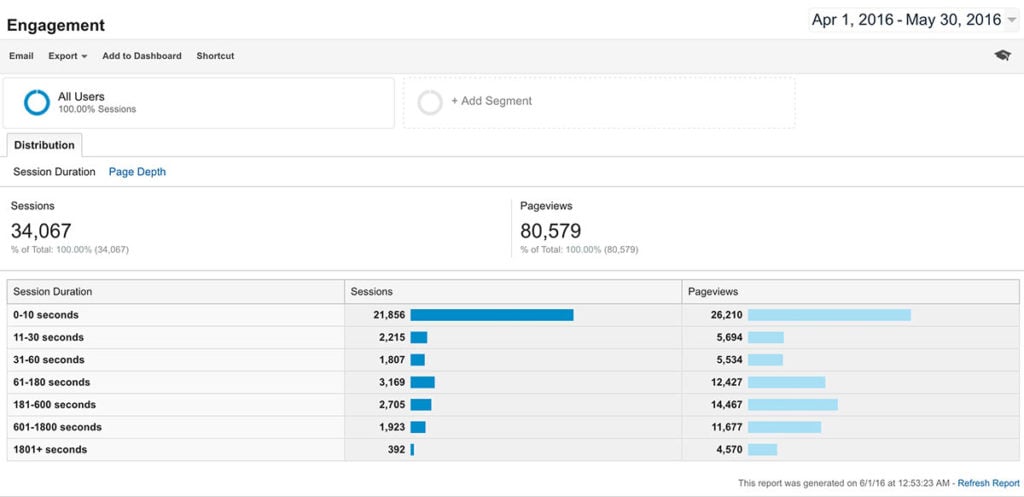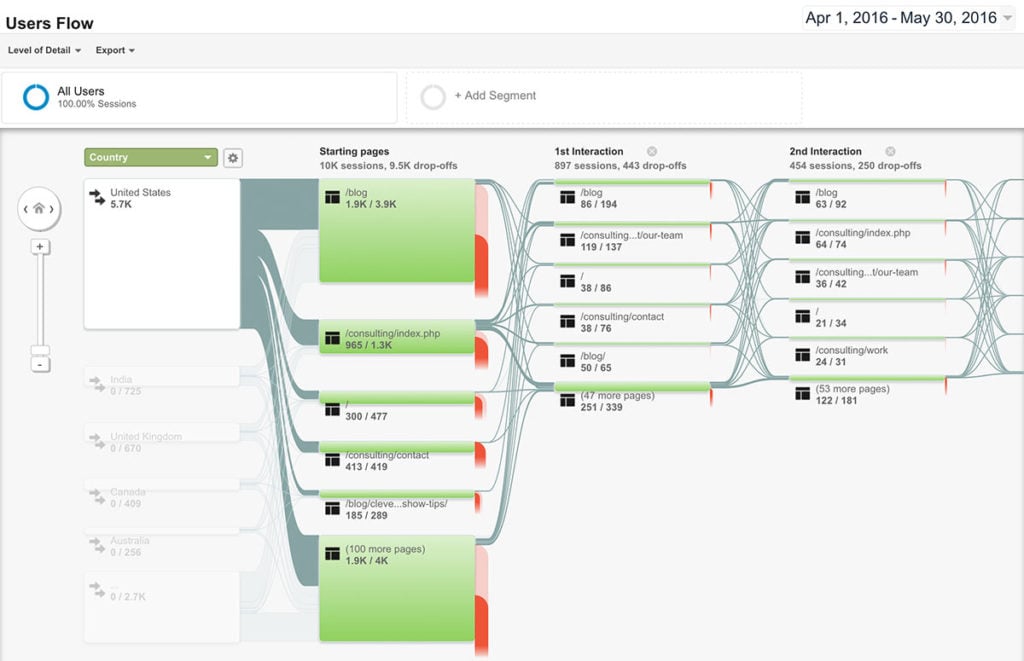When it comes to writing blog posts for your company blog, nothing is more important than the headline. After all, the headline is what convinces curious readers to click through and invest time in learning about the topic you’re writing about.
But once your clients click through to learn more about your blog post, more than half of readers will make a decision to keep reading or click away within 15 seconds, and as few as 20 percent of readers will stick around for the full article. That means if you don’t know how to write a blog introduction that grabs their attention right away, even the most perfect headline will fail to deliver the engagement you’re looking for.
Want to write a blog introduction that will inspire your clients to spend time on your website? Here are three things you need to do:
1. Understand Your Data
First, make it a priority to understand your website’s unique analytics. Look into your website visitors average time on page to get a sense of how much time your readers spend on your blog before navigating off page.
 Google Analytics Time On Page/Engagement Example
Google Analytics Time On Page/Engagement Example
Then consider your website’s users flow, which will show you where most visitors drop off of your website. Use this information and make decisions about which blog posts to edit, delete, or rewrite, or to reevaluate how you guide website visitors to different pages on your site.
 Google Analytics Users Flow Example
Google Analytics Users Flow Example
2. Use the Introduction to Solve a Problem
You didn’t click through to read this post because you read everything we write. You clicked through because you are writing blog posts for your company and you want to learn how to write a blog introduction that your clients will read. If the introduction of this article didn’t clearly identify this need, it’s very likely you would have closed the browser or clicked over to another website.
When you’re writing for your clients, everything you write should begin and end with your customer personas. Refer to customer data when you brainstorm your keywords and blog topics. Write your headlines with your customer’s goals in mind. And make sure every blog introduction clearly identifies the problem they have and how the blog post will address it.
3. Use the Introduction to Explain the Consequences
In addition to identifying a very clear problem, the best introductions also explain the consequences of not addressing that problem. In the case of how to write a blog introduction, this means pointing out the fact that readers drop off when they’re not engaged and if you don’t write a good introduction you’re wasting your time on the rest of the article.
As you pull together your blog post introduction, gently outline the risks associated with not reading the article or following your instructions. Be clear about the value that reading the post will bring your customer and they’ll be more likely to follow through.
If you’re writing or editing your own blog content, you need to know how to write compelling headlines and how to write a blog introduction that keeps readers hooked. Sign up for email alerts from our blog to stay in the know, or contact us today for an inbound marketing consultation.









